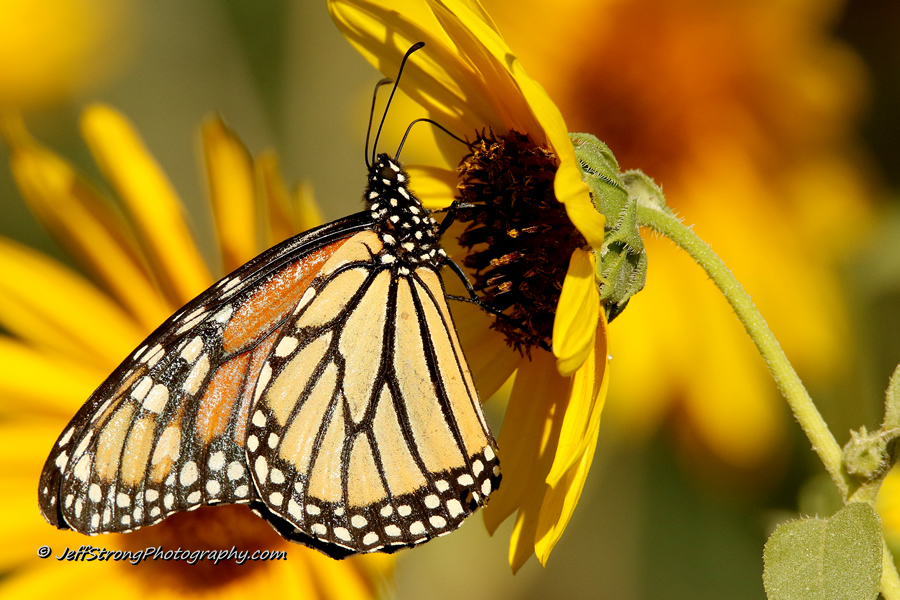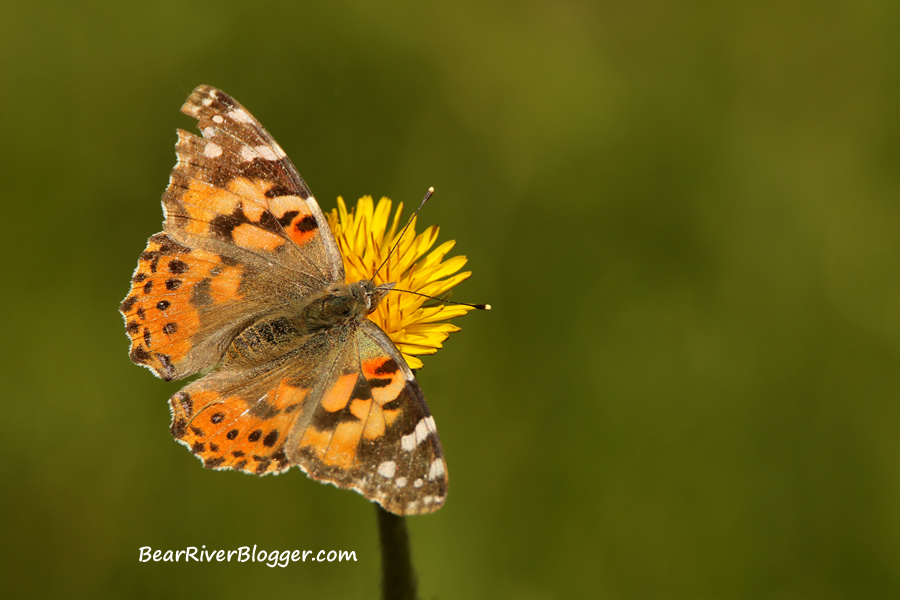Let me pose a question to you, why should we care about milkweed? It’s a weed, isn’t it? It can spread like wildfire, both by seed and by root, so why should society care about this seemingly obnoxious and unruly plant?
Well, I’ll start by saying it isn’t a weed, at least in my mind it isn’t. It is a fascinating and very beneficial plant for nature. I currently have around 75 or more showy milkweed (Asclepias speciosa) growing in my yard and I plan to have much, much more before my bird and pollinator-friendly yard efforts are complete.

I love nature and I love anything that supports the natural world we live in and the milkweed plant does just that. It is used in some way by a variety of creatures, some are more well known than others but all are an important part of nature in their own way and purpose.
Some creatures, such as the iconic monarch butterfly caterpillar, eat the leaves of the milkweed plant. Others, including the swallowtail butterfly, nectar on milkweed’s timely blossoms, and a few others, like you will see below, just reside on the milkweed plant at large, searching for any unsuspecting meal it can find.
All in all, the milkweed plant offers something to so many different and interesting creatures.
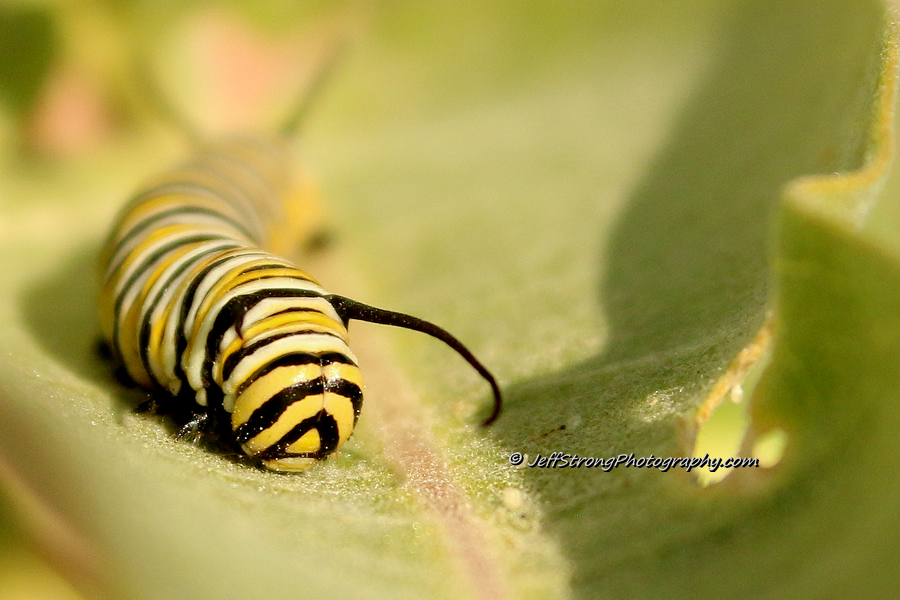
I am not sure when, where, why, or who designated its namesake with the term weed, but the terminology has given this plant a much-maligned and undeserving reputation.
I, too, was one who only thought of the milkweed as a weed because, well, it’s in its’ namesake. Only after learning how important this plant really is to a variety of creatures, which started with me learning it is crucial for the monarch butterfly, did I see it in a whole different light.
I am here to try and change the bad rap milkweed has unfairly inherited with some photographs I’ve taken over the past few years of the showy milkweed, which, by the way, is native in my neck of the woods here in northern Utah.
Many, not all but many, of the images on this blog post were taken on the Bear River Migratory Bird Refuge in Box Elder County, Utah, during my numerous photography visits there.
Some of the images were taken in my yard, and a couple was taken up Farmington Canyon along the top of the Wasatch Mountains.

I hope you see what I have tried to capture about the value milkweed has in these images.
I hope you see the beauty and intrigue that is in nature as a whole and specifically with this particular plant.
I hope you see the purpose milkweed has for nature and why we need to plant more of it, both in our own yards and in bigger natural settings, like the Bear River Migratory Bird Refuge, for example.
The value I speak of comes from having nature among us, doing what it does best, being nature. It can’t be measured in dollars and cents, but it is there.
It’s the interactions of nature’s cast, creatures dealing with one another and with the environment, that is so intriguing to watch, study, photograph, write about and just plain have around.
That’s the value I am referring to, an intrinsic reward of just enjoying nature. A value that’s not able to be truly measured by economic data or analysis.
Oh, economists and politicians try, but there is no way anyone can put a true and accurate monetary appropriation on nature, nor should they in a traditional sense.
We should protect nature because it is diminishing all over the earth, much of it at an alarming rate, and it can bring us so much joy to have around once we go out and actually experience it, embrace it and understand it.
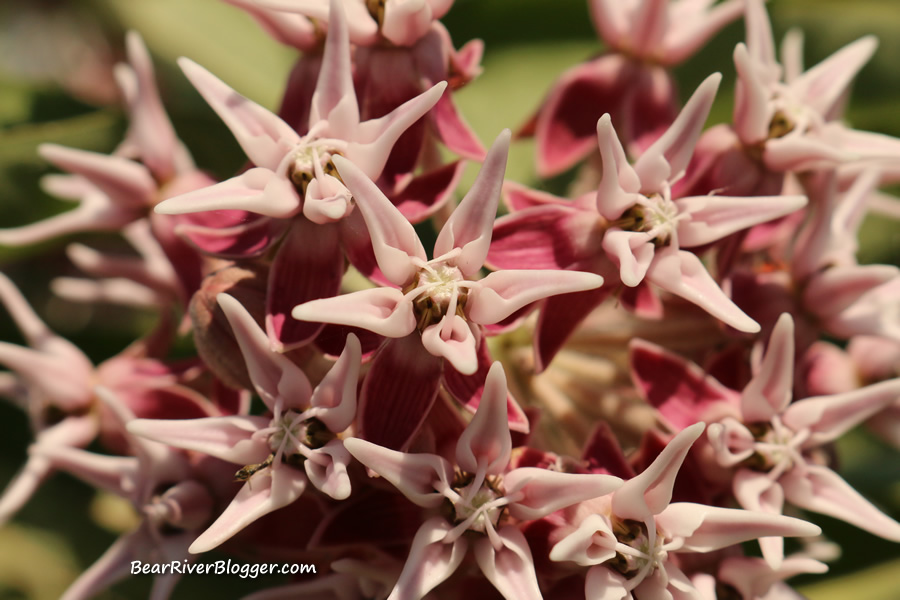
That, in a nutshell, is what I hope comes out of both this blogging endeavor and my photography efforts, people seeing how interesting nature truly is and going out and experiencing it for themselves.
We can’t turn the protective tide until people go out and see just how fascinating nature really is in person, for themselves, and then decide to help in future conservation and education efforts.
If we value even just some of nature’s creatures, and I think many of us in fact do, we need to revere and, thus, protect all the animals, plants, land, and water resources nature is comprised of because we can’t pick and choose which parts of nature we want to have around.
It’s kind of an all-or-nothing proposition.
Nature is fascinating to watch and learn about, so let’s get to a few photographs and see what I am talking about with regards to the grossly misunderstood milkweed plant.
As a side note, I am not the best at nature identification, unless, of course, it’s birds where, even after 40 years of bird watching, I am ok but still learning each day, so if anybody can identify any of the undetermined creatures in this blog post please let me know.
I would appreciate it as I love nature, but I don’t know much about identifying the vast array of other creatures out there. It is, however, what I find so fascinating about nature actually, there is always something to learn and see no matter how old or experienced someone is.
Milkweed And The Fight For Survival
This first image was actually taken just a few moments ago in my yard. I got up to go flag some milkweed so the person mowing my lawn wouldn’t mow them over and I came across a most interesting situation.
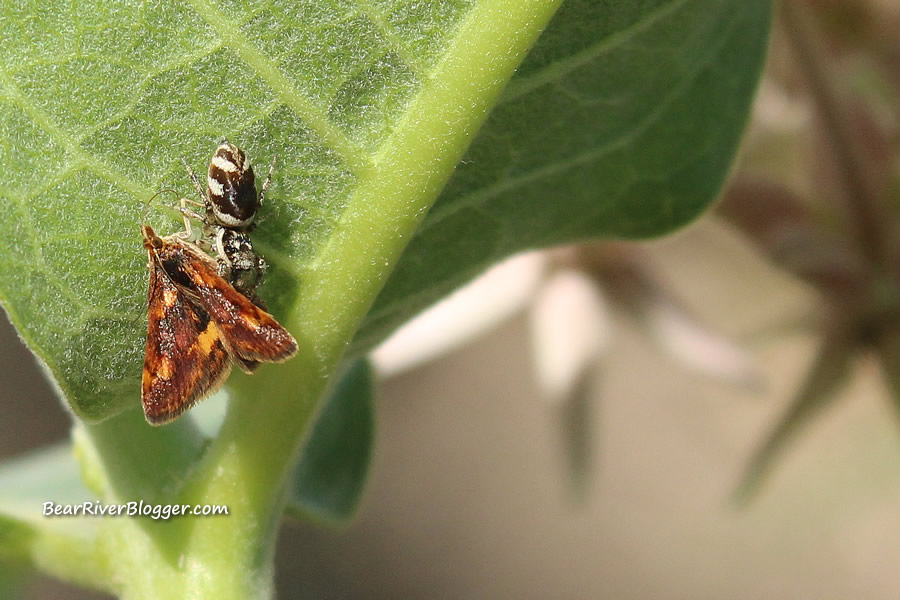
It is some kind of spider that has caught either a moth or a small butterfly for a meal. This is actually the underside of the milkweed leaf and the spider is hanging on to the moth/butterfly in an upside-down position.
The spider was living on the milkweed and this moth/butterfly happened to land where it was sadly but purposely taken for a meal by another creature also trying to survive.
This is nature. It’s not always kind to one another or pleasant to watch during moments like this, but it lives and acts out its daily show in even the smallest of theaters, like this milkweed plant in my front yard.
Most people would never get to see this kind of thing, and I was so lucky to come across it. I find this kind of stuff, nature being nature, so fascinating, so intriguing, especially when I come across something I had never seen before in my own yard.

I promptly grabbed my camera and snapped a quick image to show people nature isn’t just grand spectacles played out in wildlife preserves, on safaris, or encased in protected forests, it can be in our own backyards, too.
It can be incredibly small, short interactions confined to a very tiny part of our day-to-day world, like a two-foot-high milkweed plant alongside the driveway, as it was in this case.
Another interesting situation I came across was up Farmington canyon in northern Utah. I was photographing butterflies on wildflowers and milkweed and watched a unique struggle for survival unfold right in front of me.

This unsuspecting butterfly landed on the milkweed to nectar. It was only a matter of seconds before a small but tenacious group of ants attacked it, quickly subduing it for a future meal.
This is another real-life struggle played out in nature, day in and day out, we almost always miss. Both parties are valuable parts of nature, but sometimes one has to give way so the other can survive.
I don’t root for either party in cases like this, both are of equal value, but rather, I cherish the opportunity to watch nature unfold and act out its’ story right in front of me.
Milkweed and Butterflies
This next image should need no introduction. It is a monarch caterpillar on showy milkweed.

The monarch butterfly population has been in a steep decline in recent times, some of which can be attributed to the loss of milkweed across North America.
You see, the milkweed plant, having 108 different types in North America but only 30 known to be used by monarchs according to Southwest Monarch Study, is the only plant monarch butterflies will lay their eggs on and their caterpillars will eat.
The math is very simple, no milkweed equates to no monarchs. There are no other variables in this simple equation, and a world without the majestic butterfly is a world I don’t ever want to see.
This particular monarch butterfly image was photographed on the Bear River Migratory Bird Refuge a couple of years ago. It is sitting on a rabbitbrush plant, enjoying a bounty of nectar as it fuels up for a long flight southward.
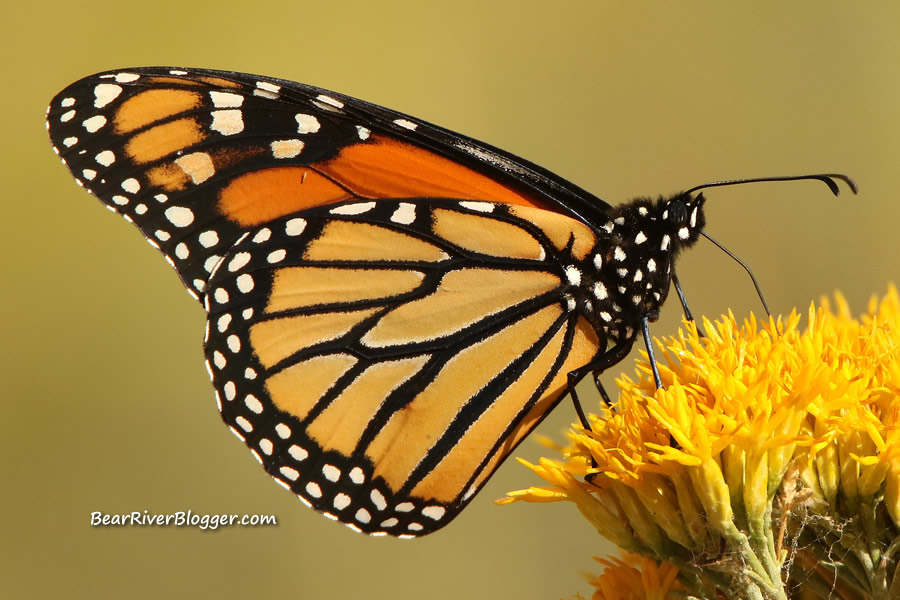
It quite possibly was reared on the refuge as the nearly 80,000-acre wildlife preserve does host a good staple of both showy and swamp milkweed.
I don’t know about you but, for me at least, this is one of the most spectacular sights in nature, a monarch butterfly nectaring on a flower or plant, readying itself for a long journey southward to spend the winter before it heads back north in the spring so the species can do it all over again the next year.
Monarchs are truly fascinating creatures. With each northward generation, individuals press on to areas they have never been to, only to lay the groundwork for the next generation to carry the torch further north until the summer solstice tells them to stop migrating.
They breed and lay eggs on milkweed plants they find along the way. Most monarch butterfly lifespans are measured in a matter of weeks, so their work is extremely urgent and vital to the success of the species as a whole.
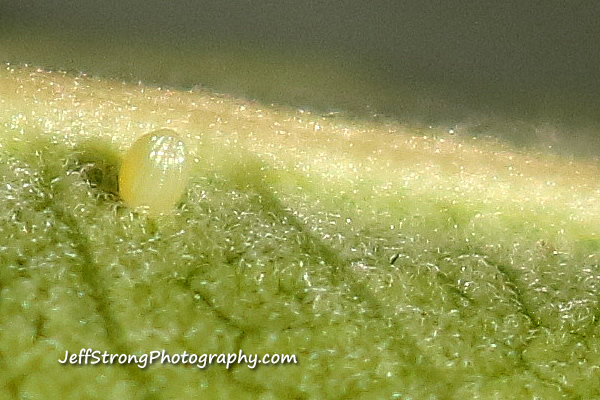
As the final generation of monarchs is raised, these individuals then, when nature beacons the call, turn south and head for their wintering grounds thousands of miles away, also a place where these particular individuals have never been to before but somehow they can find because this invisible road map has been genetically programmed into their DNA.
We don’t fully understand how they do it, how they can migrate thousands of miles to a completely new area, but we really don’t need to understand how they migrate to just enjoy and be fascinated by the yearly spectacle.
Another species of butterfly I truly admire, quite possibly as much as the monarch, is the swallowtail butterfly. These non-migrating butterflies rely on milkweed in a different way than does the monarch.
Swallowtail butterflies here in northern Utah, both the western tiger and two-tailed swallowtail butterfly, utilize nectar from the showy milkweed when it is in bloom.
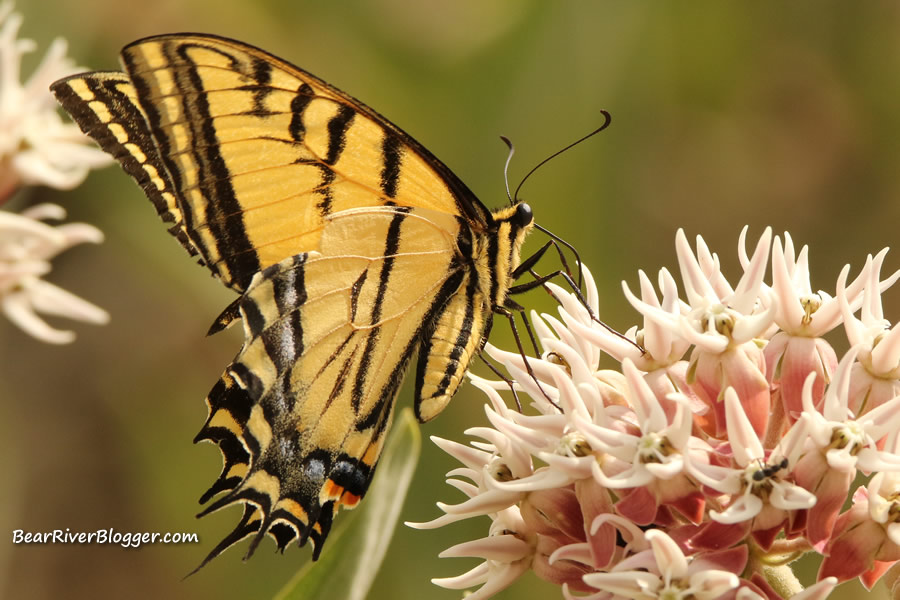
I found this individual high atop the Wasatch mountain range, approximately 45 miles south of the Bear River Migratory Bird Refuge.
It, along with numerous other swallowtail butterflies, was going from milkweed to milkweed feeding on the nectar. There were a few low-lying wildflowers in bloom nearby, but the swallowtails stayed put in the large patch of milkweed I was observing.
For a brief period like this, the milkweed blooms offer a bounty of nectar for a variety of butterflies when other options are somewhat limited.
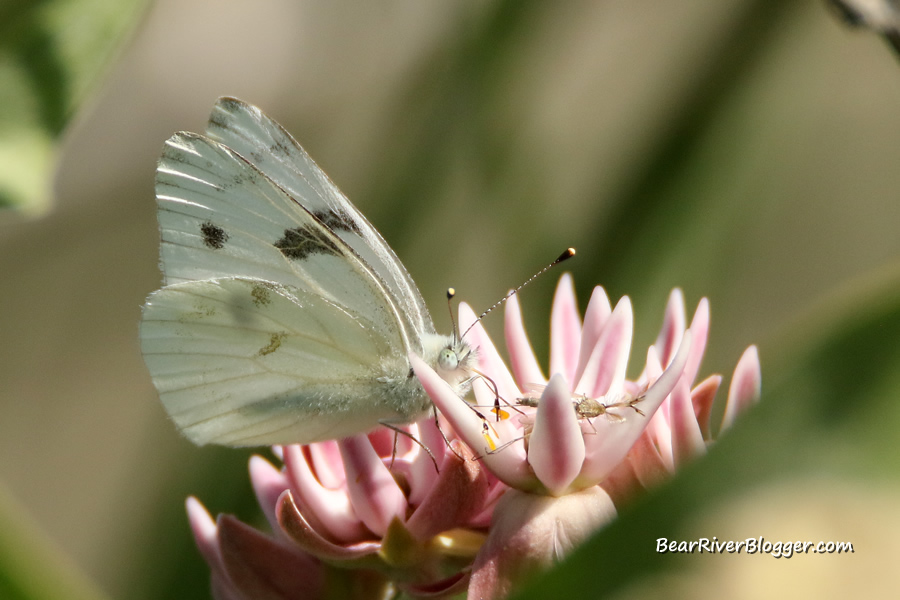
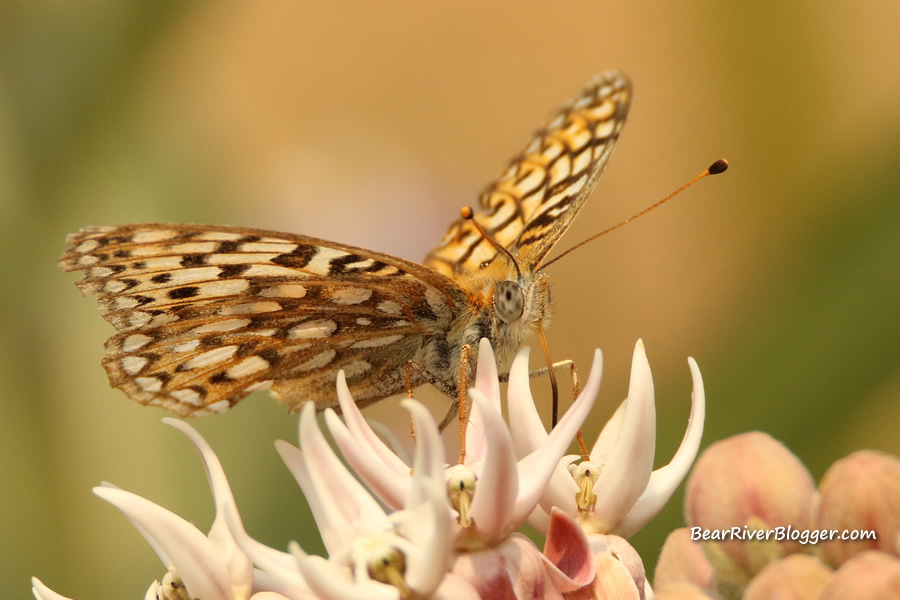
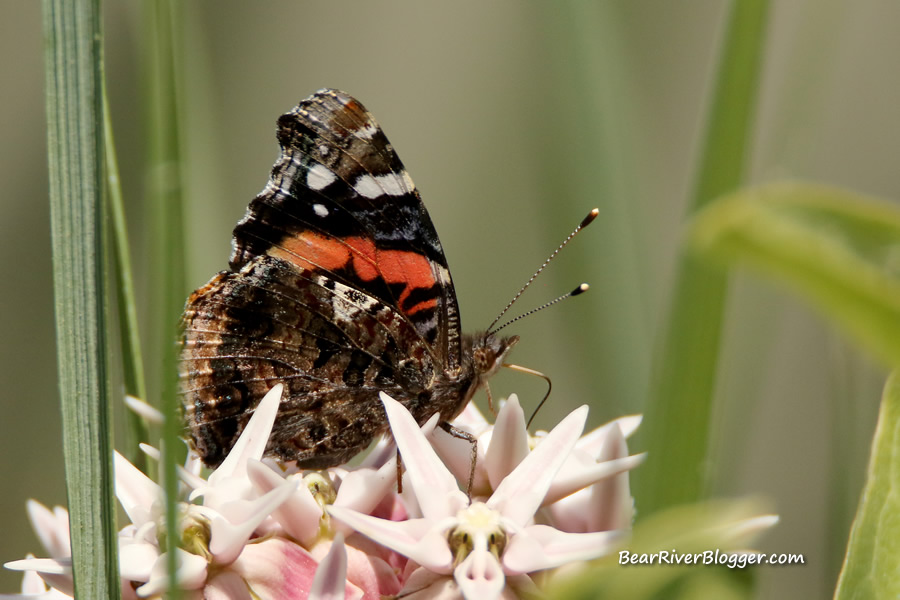
Milkweed And Birds
This next image is of a female black-chinned hummingbird. It was photographed on the same day as the swallowtail image above.
I was watching butterflies and this lovely lady stopped nearby to nectar and this moment was when I learned first-hand hummingbirds feed on milkweed nectar.

I never would have known this interesting fact about hummingbirds if I hadn’t decided to go outside and enjoy nature. You can learn a lot by just sitting and observing the creatures and plants around us, even in our own yards, in fact.
Photography is my catalyst for getting out in and enjoying nature, and when I came home and looked through these images, a pleasant and unexpected surprise awaited me.
Take a closer look at this image blown up a bit. Do you see the monarch caterpillar behind the hummingbird? It is rewarding moments like this that bring me back to nature time and time again.

Milkweed, Insects And Other Creatures
Now, admittedly, this is where my knowledge of nature starts to fall off a bit. I love insects and the other creatures out there, but I really struggle with identifying them and knowing much about them.
I confess my greatest passion is both birds and butterflies, but I do admire and respect all of nature’s creatures, including the ones I don’t know much about, like the images below, in fact.
Take a look at the photographs below of some of the other interesting creatures I have photographed benefiting from the showy milkweed, and I will see you at the bottom of this post for some closing remarks.
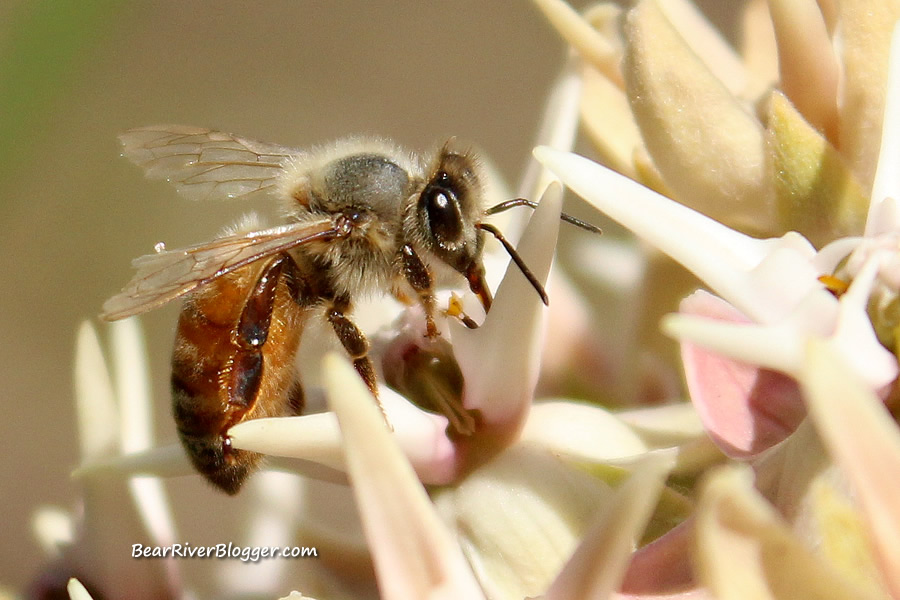
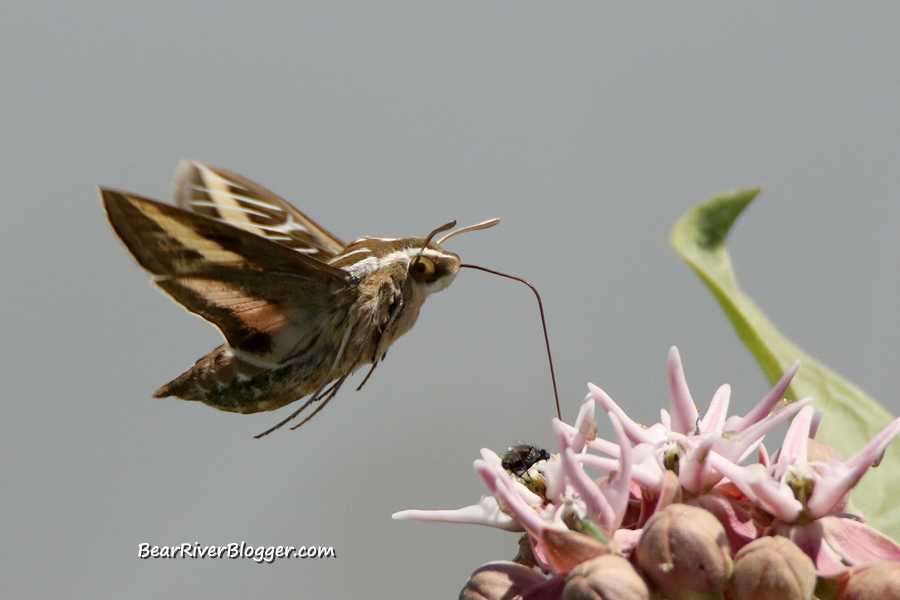




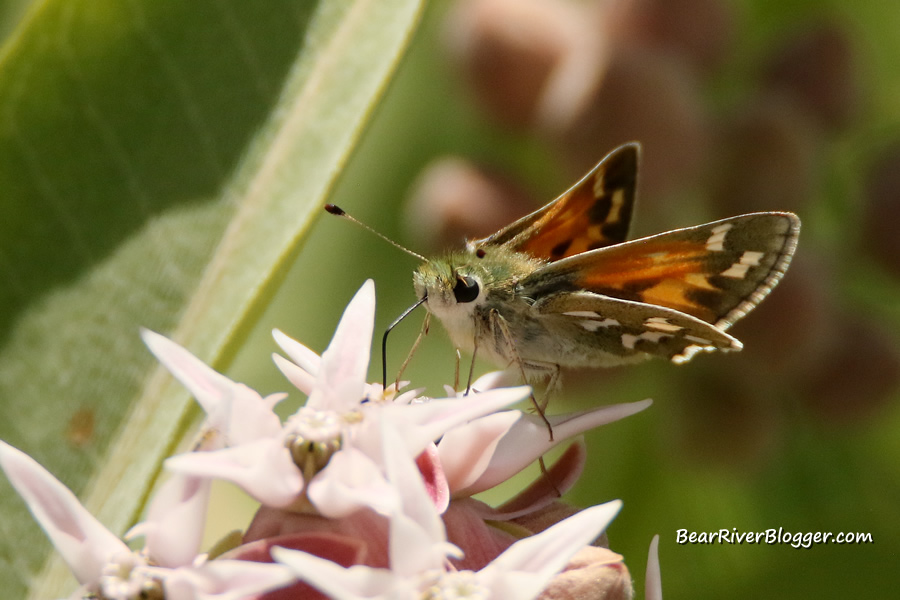
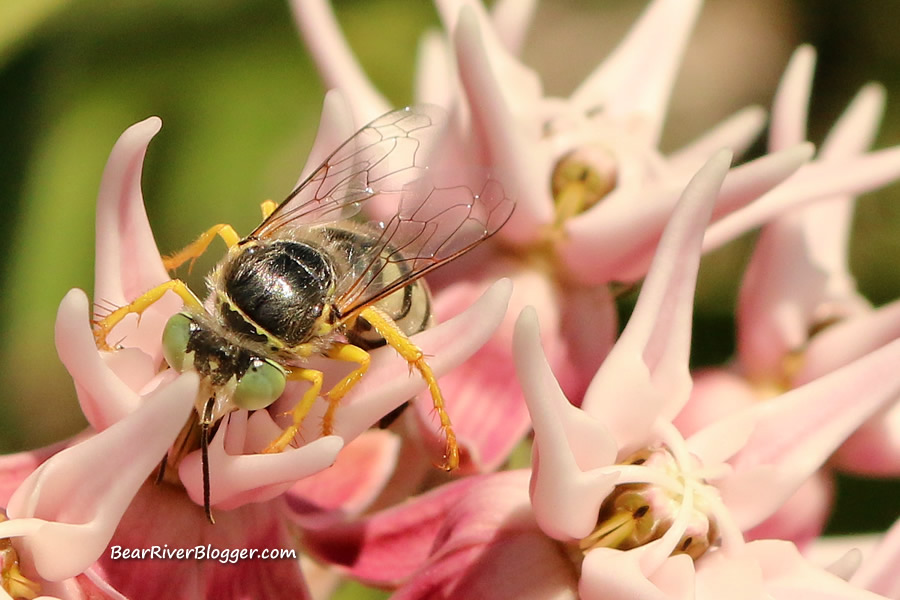
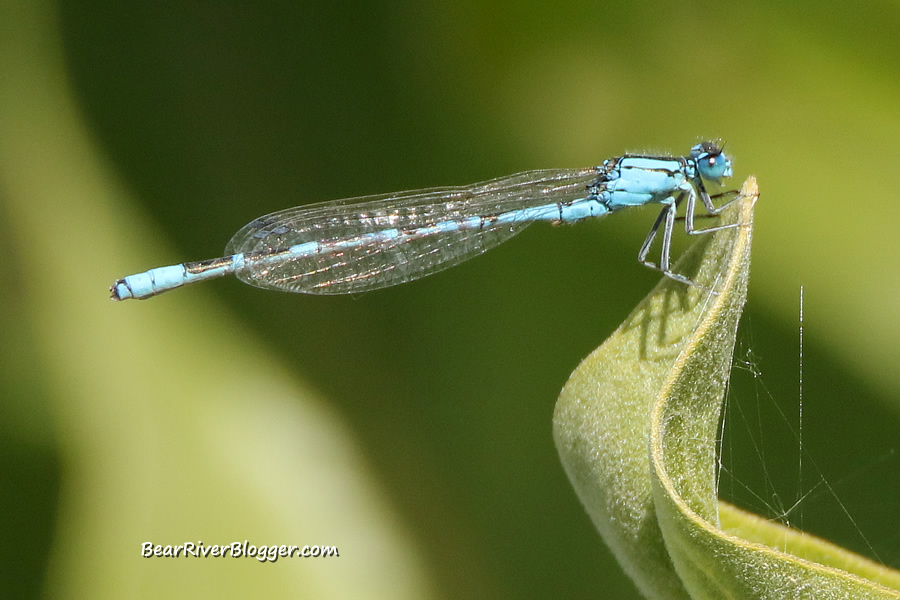
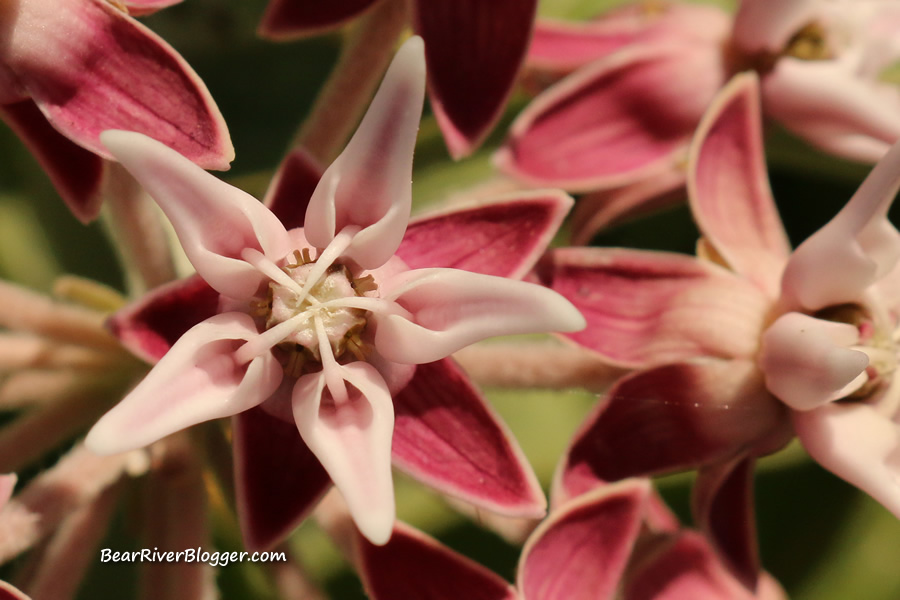
Final Thoughts About Milkweed
I hope by now you see milkweed is not a useless, noxious weed many portray it out to be. It is an important part of nature. Its’ blooms are beautiful and it’s’ nectar and leaves a source of food for many creatures.
If we are to keep around the creatures we love to watch and learn about, we need to keep around the plants they need for survival.

I encourage you to learn more about milkweed plants native to your particular area. All it took for me was a few trips with my camera to the Bear River Migratory Bird Refuge and a few searches on google, and I began to realize this misunderstood plant is a vital piece of nature.
It started through photography with the monarch butterfly but, as you can see from above, has turned into a fuller understanding and appreciation for the milkweed plant.
If you enjoyed this post and the photography, please feel free to share it via your favorite social media outlets. Also, consider subscribing to this blog via email notifications in the footer section below. I hate spam as much as you do so the only emails you will ever get from me are when I publish a new blog post.

